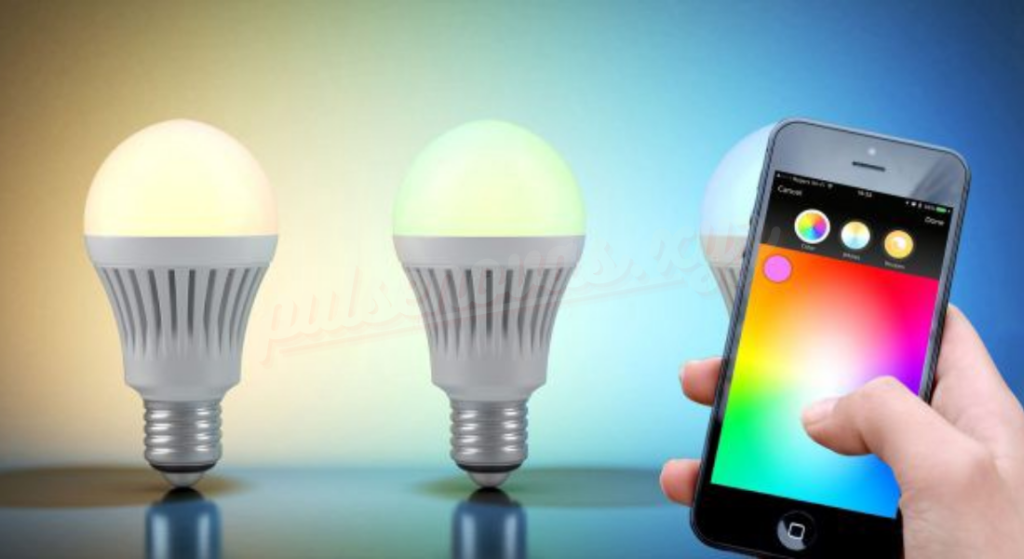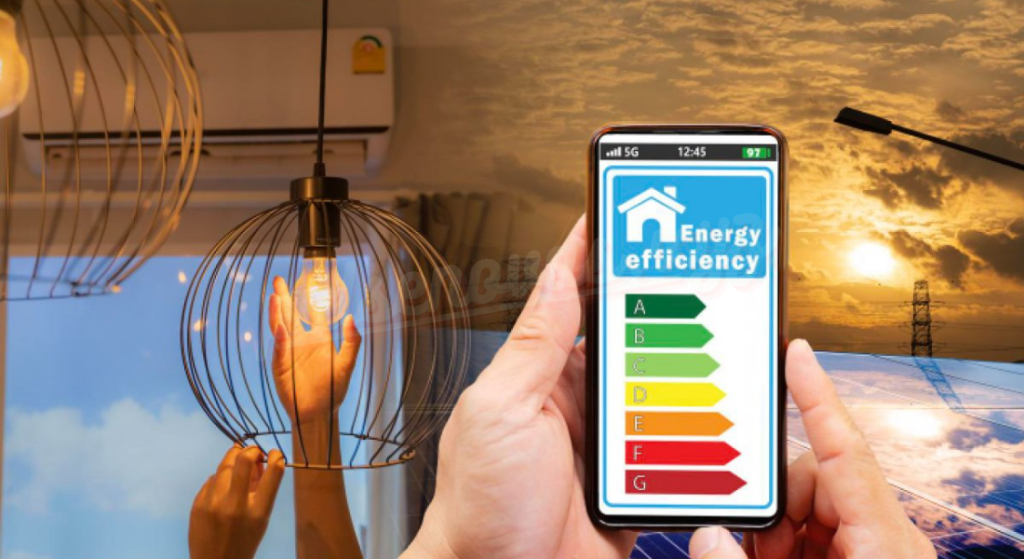blog
Energy Efficiency with Smart Lighting for Home Save Money and Reduce Consumption
Lighting is an essential part of any home, but it can also account for a significant portion of your energy bill. As energy prices continue to rise, homeowners are increasingly seeking ways to reduce consumption while maintaining comfort and convenience. One of the most effective solutions is smart lighting, which not only offers convenience but also improves energy efficiency. By switching to smart lights, you can save money, reduce electricity consumption, and enjoy a more sustainable home.
In this article, we’ll explore how smart lighting for the home can help you achieve energy efficiency, save money on utility bills, and reduce your carbon footprint, all while providing superior lighting control and customization.
What is Smart Lighting?
Smart lighting refers to lighting systems that can be controlled and automated through wireless technology, typically using a smartphone app, voice commands, or integration with other smart devices in your home. These lights often use LED technology, which is inherently energy-efficient, and offer features such as dimming, color-changing, and motion detection.
Smart lighting can be controlled remotely, allowing you to adjust brightness, turn lights on and off, and set schedules. Most smart bulbs also come with energy-saving modes and the ability to integrate with home automation systems, making them a powerful tool for reducing your home’s energy consumption.
1. Energy-Efficient LED Technology
One of the primary reasons smart lighting is so energy-efficient is that most smart bulbs are built using LED (light-emitting diode) technology. LED lights consume much less energy than traditional incandescent or halogen bulbs while providing the same or better brightness.
- Lower Power Consumption: LED bulbs use up to 85% less energy compared to traditional incandescent bulbs. As a result, you can significantly reduce your home’s electricity consumption by replacing old, energy-guzzling bulbs with smart LED lights.
- Longer Lifespan: LED bulbs have a longer lifespan, typically lasting around 25,000 hours or more. This means you’ll replace bulbs less frequently, further reducing waste and saving money in the long run.
- Better Light Quality: Smart LED lights provide excellent illumination without the heat output of incandescent bulbs, making them a safer and more efficient option.
By making the switch to smart LED lighting, you can instantly lower your energy consumption and contribute to a more sustainable home.
2. Dimming and Brightness Control
One of the standout features of smart lighting is the ability to control the brightness of your lights. By dimming the lights when full brightness isn’t necessary, you can use less energy, which directly translates into lower energy bills.
- Customizable Lighting: With smart lighting systems, you can adjust the brightness based on the time of day, activity, or desired mood. For example, dimming the lights in the evening or while watching TV or reading reduces energy usage without sacrificing comfort.
- Energy Savings: Studies show that reducing the brightness of a bulb by 50% can reduce its energy usage by up to 20%. Smart lighting allows you to easily fine-tune your lighting needs, optimizing energy efficiency.
- Automated Dimming: Many smart lighting systems allow you to automate dimming. For example, the lights can gradually dim as the evening progresses, helping reduce energy consumption without requiring manual adjustments.
With the ability to dim your lights and set them to the perfect level, you can minimize unnecessary energy consumption throughout the day.

3. Motion-Activated Lighting
One of the most effective ways to save energy with smart lighting is through motion sensors. These sensors detect movement in a room and turn lights on or off based on occupancy. Motion-activated lights can help prevent energy waste by ensuring that lights are only on when needed.
- Automatic On/Off: Motion sensors automatically turn lights on when you enter a room and turn them off when you leave, ensuring that lights aren’t left on in empty rooms. This eliminates the risk of forgetting to turn off lights and wasting energy.
- Adjustable Sensitivity: Many smart lighting systems allow you to adjust the sensitivity of motion sensors. For example, you can set the light to stay on for a few minutes after detecting movement or program it to turn off immediately when no motion is detected.
- Outdoor Lighting: Motion-activated outdoor lights can help save energy by only turning on when someone approaches, providing safety and security without running lights unnecessarily.
By installing motion sensors in high-traffic areas or less frequently used rooms, you can reduce energy consumption and prevent wasting electricity in spaces that are not actively being used.
4. Scheduling and Automation
Smart lighting systems offer powerful scheduling and automation features, which are key to energy efficiency. You can set your lights to turn on or off automatically at specific times of the day, reducing energy waste and ensuring your lights are used only when necessary.
- Automated On/Off Times: You can create schedules that automatically turn lights off when you leave the house or at night when it’s time to sleep. Similarly, you can set lights to turn on before you arrive home, ensuring that your home is lit without you having to manually adjust the lighting.
- Seasonal Adjustments: With smart lighting, you can adjust your lighting based on the seasons. For example, in the summer when there is more natural light, you may want to schedule your lights to be off during the day. In the winter, you can program your lights to come on earlier to enhance safety and visibility.
- Energy-Saving Routines: Some smart lighting systems come with built-in energy-saving modes that automatically adjust your lights to optimal brightness based on the time of day or your activities. These routines are designed to ensure that your lights are never using more energy than necessary.
By automating your lighting system, you not only save time but also ensure that your lights are working in the most energy-efficient way possible.
5. Integration with Smart Home Systems
Smart lighting can integrate seamlessly with your existing smart home system, allowing you to automate and control your entire home’s lighting through one platform. When combined with other smart devices, such as smart thermostats, motion sensors, and energy monitoring systems, smart lighting can further optimize energy use throughout your home.
- Voice Control: Smart lighting can be controlled through voice assistants like Amazon Alexa, Google Assistant, or Apple Siri, making it easier to turn lights on or off without wasting energy. Simply ask your voice assistant to turn off the lights when you leave a room or to dim them when you don’t need full brightness.
- Smart Thermostats: Integrate your smart lighting with smart thermostats to create energy-saving routines. For example, you can set your thermostat to adjust the temperature when you leave the house and have your lights turn off automatically at the same time.
- Energy Monitoring: Some smart lighting systems include energy monitoring features that allow you to track how much energy you’re using. You can view real-time data and identify areas where you can make adjustments to save energy.
By combining smart lighting with other smart home devices, you can create a fully automated, energy-efficient home that reduces electricity consumption across all aspects of your lifestyle.
6. Reduce Your Carbon Footprint
Making the switch to smart lighting doesn’t just benefit your wallet—it also helps reduce your carbon footprint. By consuming less energy, you’re lowering your overall electricity demand, which in turn reduces your reliance on fossil fuels and contributes to a more sustainable future.
- Eco-Friendly Lighting: LED smart bulbs use a fraction of the energy compared to traditional incandescent bulbs, resulting in fewer greenhouse gas emissions. Using smart lighting helps reduce your environmental impact and supports a cleaner, greener planet.
- Sustainable Homes: As more homes adopt smart technology, there’s a significant collective impact on energy consumption. By reducing electricity usage at the individual level, we can collectively contribute to global sustainability efforts.
Switching to energy-efficient smart lighting is an easy and effective way to play your part in the fight against climate change.
Conclusion: Save Money and Reduce Consumption with Smart Lighting
Smart lighting offers a host of benefits that go beyond convenience and aesthetic appeal. By adopting smart lighting in your home, you can significantly reduce energy consumption, save money on utility bills, and contribute to a more sustainable environment. With features like LED technology, dimming, motion sensors, and automation, smart lights give you total control over your home’s lighting, ensuring it’s as efficient as possible.
Whether you’re looking to cut costs, lower your carbon footprint, or simply enjoy more customizable and convenient lighting, smart lighting is the solution. Make the switch today, and experience the perfect combination of energy efficiency and modern technology for your home.

